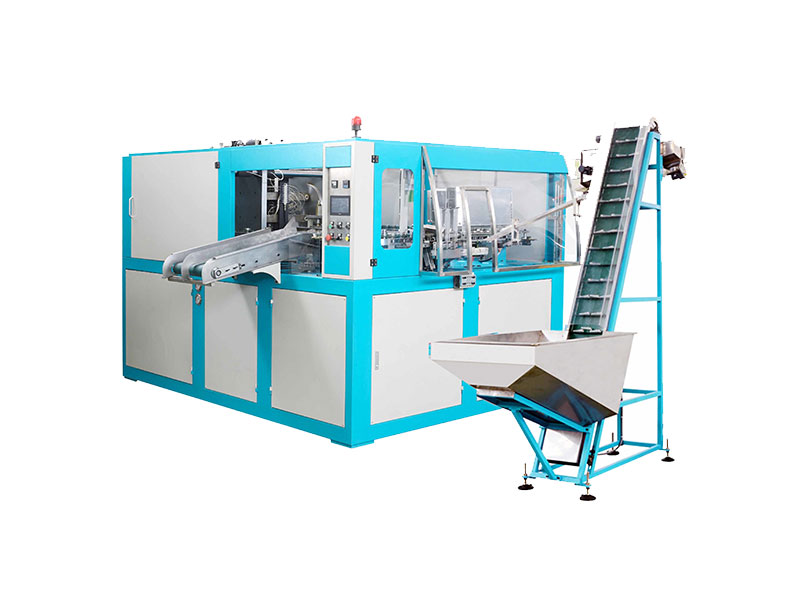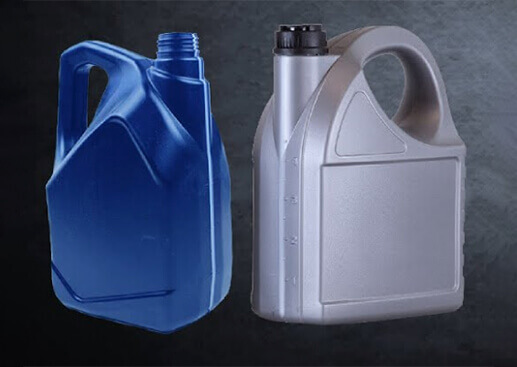

This is the least-used of the three blow molding processes, and is typically used to make small medical and single serve bottles. In the IBM process, the polymer is injection molded onto a core pin then the core pin is rotated to a blow molding station to be inflated and cooled. The process of injection blow molding ( IBM) is used for the production of hollow glass and plastic objects in large quantities. Titanium nitride-coated blades are often used rather than standard steel to increase life by a factor of 30 times. For example, moldings produced from amorphous materials are much more difficult to trim than crystalline materials. Different types of the materials have their own physical characteristics affecting trimming. Spin Trimmers are used on a number of materials, such as PVC, HDPE and PE+LDPE. The excess plastic is then recycled to create new moldings. This is trimmed off by spinning a cutting blade around the container which separates the material. The accumulator head or reciprocating screw methods use hydraulic systems to push the parison out quickly reducing the effect of the weight and allowing precise control over the wall thickness by adjusting the die gap with a parison programming device.Ĭontinuous extrusion equipment includes rotary wheel blow molding systems and shuttle machinery, while intermittent extrusion machinery includes reciprocating screw machinery and accumulator head machinery.Ĭontainers such as jars often have an excess of material due to the molding process. With continuous extrusion the weight of the parison drags the parison and makes calibrating the wall thickness difficult.

In this case the screw may turn continuously or intermittently. With the accumulator method, an accumulator gathers melted plastic and after the previous mold has cooled and enough plastic has accumulated, a rod pushes the melted plastic and forms the parison. Once the plastic is meleted the screw stops rotating and linearly moves to push the melt out.


"Straight extrusion blow molding is a way of propelling material forward similar to injection molding whereby an Archimedean screw turns, feeding plastic material down a heated tube. After the plastic has cooled, the mold is opened and the part is ejected. Air is blown into the parison, inflating it into the shape of the hollow bottle, container, or part. The parison is captured by closing it into a cooled metal mold. In extrusion blow molding, plastic is melted and extruded into a hollow tube forming a tube like piece of plastic with a hole in one end for compressed gas - known as a parison. Today, an even greater number of products are blown and it is expected to keep increasing.įor amorphous metals, also known as bulk metallic glasses, blow molding has been recently demonstrated under pressures and temperatures comparable to plastic blow molding. In the United States soft drink industry, the number of plastic containers went from zero in 1977 to ten billion pieces in 1999. Germany started using this technology a little bit later but is currently one of the leading manufacturers of blow molding machines. The first mass production of plastic bottles was done in America in 1939. Because glass is very breakable, after the introduction of plastic, plastic was used to replace glass in some cases. The technical mechanisms needed to produce hollow-bodied workpieces using the blowing technique were established very early on. Once the variety and production rates went up the number of products created soon followed. During the 1940s the variety and number of products were still very limited and therefore blow molding did not take off until later. This was the beginning of the commercial blow molding process. Enoch Ferngren and William Kopitke produced a blow molding machine and sold it to Hartford Empire Company in 1938. The process principle comes from the idea of glassblowing. Water channels within the mold assist cooling. Once the plastic has cooled and hardened the mold opens and the part is ejected. The air pressure inflates the plastic which conforms to the mold. The plastic workpiece is then clamped into a mold and air is blown into it. The parison is a tube-like piece of plastic with a hole in one end through which compressed air can enter. The blow molding process begins with softening plastic by heating a preform or parison. In general, there are three main types of blow molding: extrusion blow molding, injection blow molding, and injection stretch blow molding. It is also used for forming glass bottles or other hollow shapes. Blow molding (or moulding) is a manufacturing process for forming hollow plastic parts.


 0 kommentar(er)
0 kommentar(er)
